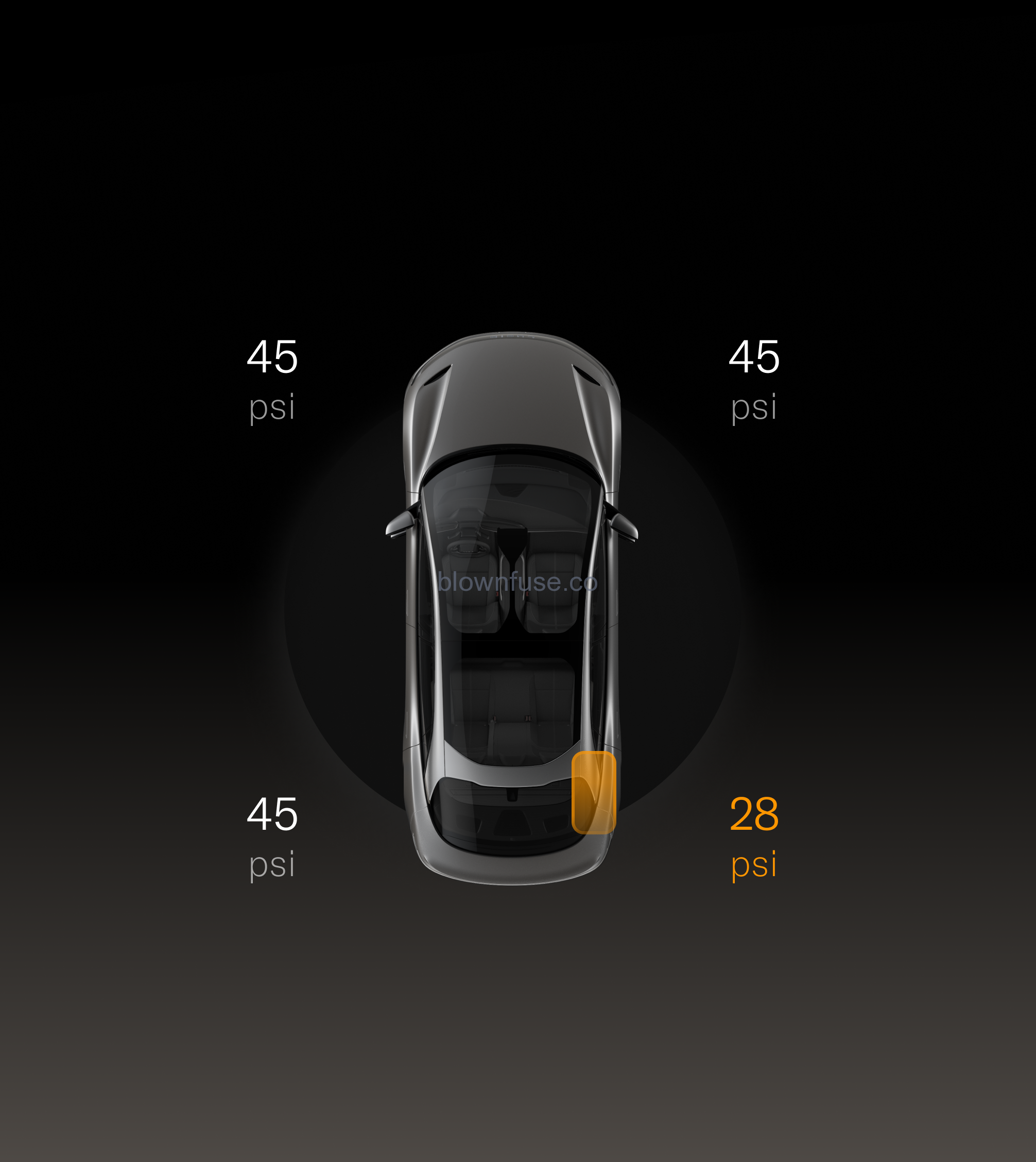2022 Lucid Air Tire Pressure Monitoring System

Tire Pressure Monitoring System (TPMS)
WARNING: The TPMS is not a substitute for manually checking tire pressures. The TPMS only provides a tire pressure warning and does not re-inflate the tires.
WARNING: The TPMS cannot register damage to a tire. Regularly check the condition of your tires.
WARNING: Using liquid or aerosol tire sealants may cause a malfunction of tire pressure sensors.
The TPMS monitors the pressure of the tires using sensors located in each wheel. In-vehicle sensors receive TMPS data using Radio Frequency (RF) signals.
NOTE: Installing accessories that are not approved by Lucid may interfere with the TPMS system.
Tire pressure warnings are displayed on the Cockpit Panel using an amber warning indicator. A warning chime will sound, and a warning message will display to alert you to a problem.
The tire pressure warning indicator will illuminate if a tire is under-inflated.
If the tire pressure warning indicator illuminates, stop and check your tires as soon as possible and inflate them to the correct pressure. If the tire pressure warning occurs frequently, the cause must be determined and rectified.
Tire pressure information display
If low tire pressure is detected, the Cockpit Panel will provide an overview of the tire pressures on the vehicle. The wheel with the low pressure will be displayed in amber.
TPMS malfunction
Your vehicle is equipped with a TPMS malfunction indicator to indicate when the system is not operating properly.
The TPMS malfunction indicator is combined with the low tire pressure indicator. When the system detects a malfunction, the indicator will flash for approximately one minute and then remain continuously illuminated. This sequence will continue upon subsequent vehicle start-ups as long as the malfunction exists.
When the malfunction indicator is illuminated, the system may not be able to detect or signal low tire pressure as intended. TPMS malfunctions may occur for a variety of reasons, including the installation of replacement or alternate tires or wheels on the vehicle that prevents the TPMS from functioning properly. Always check the TPMS malfunction indicator after replacing one or more tires or wheels on your vehicle to ensure that the replacement or alternate tires and wheels allow the TPMS to function properly.
NOTE: If a tire has been repaired using tire sealant and low tire pressure is detected, it’s possible that the TPMS has been damaged. Contact a Lucid Service Center to have the issue rectified as soon as possible.
Tire pressure correction
The tire pressure indicator light does not automatically turn off when the tire pressure is adjusted for all four tires.
After the tires are inflated to the correct pressures, drive your vehicle over 18 mph (30 km/h) for more than 10 minutes to activate the Tire Pressure Monitoring System (TPMS) and turn off the low tire pressure indicator light.
Tire changing
Always have your tires serviced or changed by a qualified technician. Care must be taken to avoid contact between the bead of the tire and the sensor during removal and refitting of the tire, otherwise the sensor may become damaged and/or inoperable.
Replacing a tire pressure sensor
If you experience frequent low tire pressure warnings and the tire pressures are correct, cotact Lucid Service Center to determine if a tire pressure sensor requires replacement.
NOTE: If a non-lucid Service Center has replaced a tire pressure sensor, it may not work until it has been programmed to the vehicle by Lucid.

